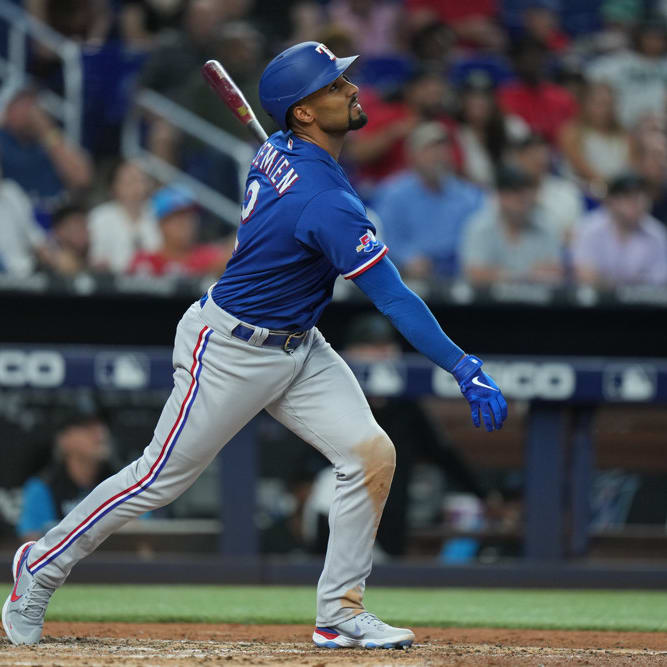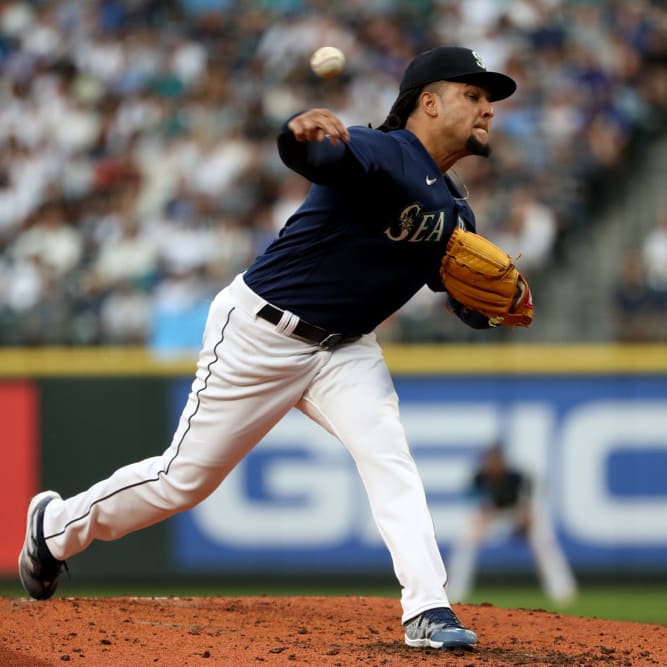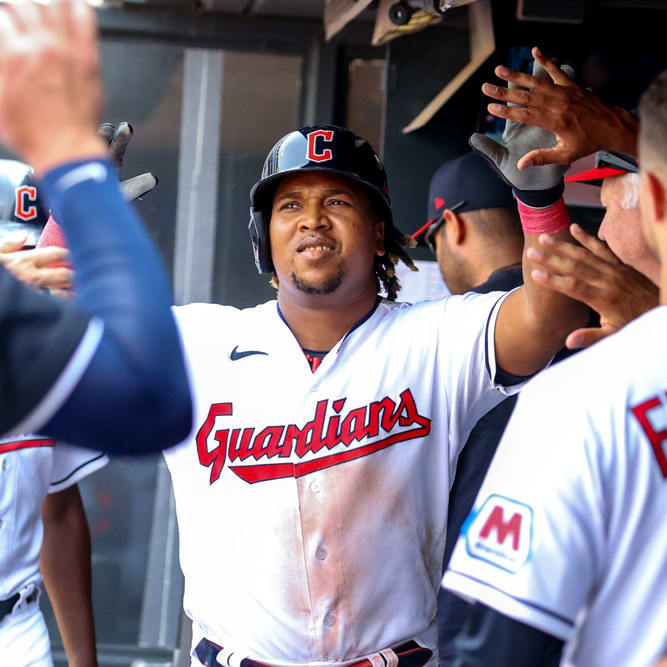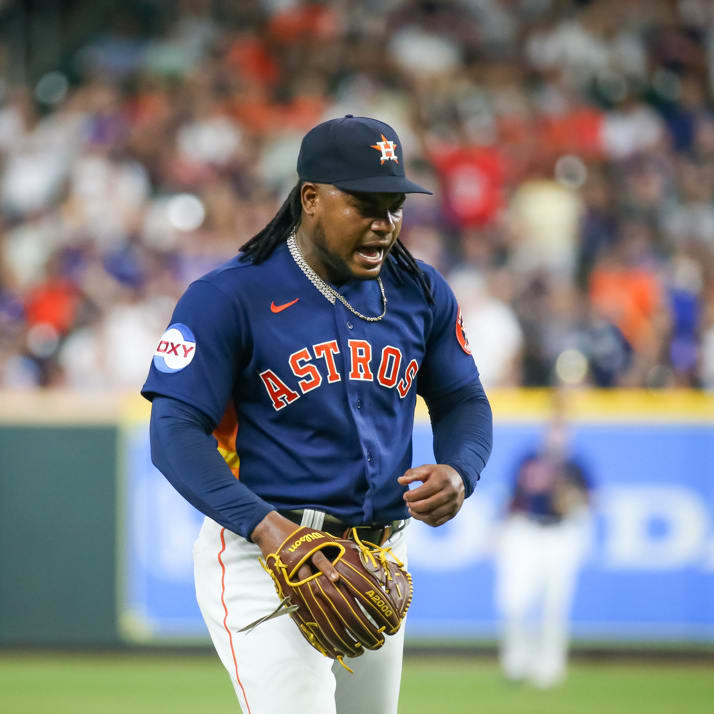This article is part of our The Wheelhouse series.
In the end, it's all about value.
Where does value come from? It's obtained at the draft table, in trades, and through pickups on the waiver wire during the season, but how is it obtained? Why do some players return positive value, and why do others lag so far behind expectations?
There are a lot of factors that we cannot control – injuries and playing time among them – but sometimes we have blind spots in our individual evaluations of players. Other times, we just didn't see a breakout on the horizon because we weren't looking through the proper lens.
The best fantasy players you will find are meticulous in their preparation. Every detail matters, and these players are much less likely to beat themselves than the rest of the pack.
Obtaining and utilizing good information is likely what brought you here. While there are no magic beans, special formulas, or a combination of 2,100 words that will guarantee you a fantasy championship, there are more resources than ever at your disposal to evaluate players and to help you see the player pool more clearly than you ever have before.
Use them.
Turn over every stone, dig into as many player splits as you possibly can, and look at year-by-year trends to determine if further exploration of a player is necessary. When you find something unusual, review that player's history of RotoWire player updates to see if there's anything that corresponds to a rapid shift in performance.
Without reviewing his
In the end, it's all about value.
Where does value come from? It's obtained at the draft table, in trades, and through pickups on the waiver wire during the season, but how is it obtained? Why do some players return positive value, and why do others lag so far behind expectations?
There are a lot of factors that we cannot control – injuries and playing time among them – but sometimes we have blind spots in our individual evaluations of players. Other times, we just didn't see a breakout on the horizon because we weren't looking through the proper lens.
The best fantasy players you will find are meticulous in their preparation. Every detail matters, and these players are much less likely to beat themselves than the rest of the pack.
Obtaining and utilizing good information is likely what brought you here. While there are no magic beans, special formulas, or a combination of 2,100 words that will guarantee you a fantasy championship, there are more resources than ever at your disposal to evaluate players and to help you see the player pool more clearly than you ever have before.
Use them.
Turn over every stone, dig into as many player splits as you possibly can, and look at year-by-year trends to determine if further exploration of a player is necessary. When you find something unusual, review that player's history of RotoWire player updates to see if there's anything that corresponds to a rapid shift in performance.
Without reviewing his 2014 player updates, it would be easy to assume that Alex Rios simply regressed because he was in his age-33 season. Instead, his litany of ailments included toe, oblique, ankle, and thumb injuries dating back to spring training. That medical chart might go a long way toward explaining why he only hit four home runs last season after hitting 18 in 2013, and why his stolen-base total fell from 42 to 17.
In some cases, history can offer more context regarding what happened in the previous season, or what is more likely to occur in the upcoming one. In other cases, combing through advanced metrics will reveal that a player has a strong skill that was previously overlooked.
The following anecdotes are the results of plunging through several wormholes. In many ways, they are a byproduct of the research that attempts to discover the "why" and "how" questions about the origins of value.
Even if the information doesn't directly change your perception about the players involved, the construct may prove to be useful in tackling your own player evaluations.
With that in mind, here are 25 things that you should know before draft day.
1. New Padres general manager A.J. Preller wasted little time this offseason reshaping his roster. With the addition of several right-handed bats via trade – including Justin Upton, Matt Kemp, Wil Myers, Will Middlebrooks, and Derek Norris – the offense should provide much more consistent run support for the pitching staff. Keep in mind, however, that the Padres have had two right-handed hitters reach the 25-homer plateau since opening Petco Park in 2004 – Khalil Greene in 2007 (27) and Phil Nevin in 2004 (26).
2. The leap from Desmond Jennings that everyone has been waiting for may never happen. Over the past three seasons, his numbers are very similar to the production of Drew Stubbs.
Jennings – .248/.323/.394, 37 HR, 231 R, 137 RBI, 66 SB (394 games)
Stubbs – .242/.304/.386, 39 HR, 201 R, 128 RBI, 67 SB (414 games)
3. Since the start of the 2012 season, only Miguel Cabrera has hit more home runs (113) than Edwin Encarnacion and Chris Davis (112). Of that trio, Encarnacion has the lowest strikeout rate (13.2%) during that span. Over the past three seasons, 20 players have hit at least 75 home runs – within that group, only Adrian Beltre (12.0%) has a lower strikeout rate than Encarnacion.
4.Billy Hamilton became the ninth player since the beginning of the Expansion Era in 1961 to steal 50 or more bases in a season while carrying an on-base percentage at or below .300. Prior to Hamilton, Jose Reyes was the last player to have a season that met those parameters in 2005. From 2006 through 2009, Reyes posted an OBP above .350 in four consecutive seasons.
5. In a similar vein, Jose Altuve became the 11th player in the Expansion Era to steal 50 or more bases while posting at least a .330 batting average. Tim Raines is the only player during that span to have two seasons with a .330-plus average and 50 or more steals (1986 and 1987 with Montreal). Altuve showed skills growth in 2014, particularly with a career-low 7.5% strikeout rate, but he'll need to sustain a BABIP that was 40 points higher than his previous career best to repeat his AL batting title winning performance (.341).
6. Since the start of the Expansion Era, 17 pitchers have had 200 strikeouts and an ERA of 2.00 or less in the same season. Only four players have achieved the feat since 1985. Only three players have done it more than once – Pedro Martinez (2), Clayton Kershaw (2), and Sandy Koufax (3).
7.Carlos Gomez has hit 66 home runs since the start of the 2012 season. While 36 players have hit more long balls during that span, none of those 36 players have more stolen bases than Gomez's 111. Among all players, only two – Rajai Davis (127) and Jose Altuve (124) – have more steals.
8.Lucas Duda had a .915 OPS against right-handed pitching in 2014. Only 10 players (minimum 100 plate appearances) were better. Not surprisingly, that group includes Andrew McCutchen, Mike Trout, Troy Tulowitzki, Victor Martinez, Jose Abreu, and Giancarlo Stanton. Surprisingly, that group also includes Corey Dickerson, Adam Lind, Justin Morneau, and Michael Brantley.
9.Yusmeiro Petit generated a higher swinging-strike rate (12.6%) than all but five pitchers last season (minimum: 100 IP). Perhaps he's best suited to work multiple innings in relief in the long run, but considering the ability to miss bats paired with his home-road splits (2.74 ERA in San Francisco, 5.06 ERA away), Petit is at least a useful streaming option when he gets an opportunity to hold a rotation spot for the Giants.
10. With an MLB-leading 48 saves in 2014, Fernando Rodney became the sixth pitcher in the expansion area to record at least two seasons with 40 or more saves at age-35 or older. Mariano Rivera (4), Trevor Hoffman (4), John Smoltz (3), Jose Mesa (3) are the others. Walks have always been a concern with Rodney, but his 3.8 BB/9 matched the walk rate of Craig Kimbrel, and was lower than the walk rates of Trevor Rosenthal (5.4 BB/9) and Aroldis Chapman (4.0 BB/9) last season.
11.Dellin Betances led all relievers with 135 strikeouts last season. Only two relievers faced more batters than Betances (341) – Carlos Torres and Dan Otero. While he has the skill set to become the best closer in baseball, if Betances replaces David Robertson as the Yankees' closer this season, his strikeout volume will almost certainly take a hit since closers never face that many batters. The average number of batters faced among closers with at least 20 saves last season was 256, and only one closer (Trevor Rosenthal) faced more than 300 batters last season.
12. There were 13 pitchers with at least 200 strikeouts last season. From that group, 11 are being selected among the first 15 pitchers off the board in NFBC winter drafts. Jeff Samardzija (21st, ADP: 73.1) and Ian Kennedy (66th, ADP 181.7) are the 200-strikeout pitchers from 2014 falling outside of the top-15 pitchers in ADP. Kennedy had the highest ERA from the group of 13 (3.63), but Samardzija's 2.99 ERA was lower than that of David Price, Max Scherzer, and Stephen Strasburg.
13. During the second half of 2014, Carlos Carrasco's strikeout rate (9.9 K/9), walk rate (1.6 BB/9), home run rate (0.34 HR/9) and ERA (1.72) were nearly identical to Clayton Kershaw's marks (10.0 K/9, 1.6 BB/9, 0.35 HR/9, 1.76 ERA). He was that good down the stretch, and the light bulb seems to have turned on for the former top prospect.
14. Since the start of the 2013 season, there are only 13 pitchers with a higher strikeout rate than Alex Wood (8.9 K/9). According to winter NFBC ADP data, there are 30 pitchers being drafted ahead of Wood in the typical draft for 2015. Wood showed skills growth last season, cutting his walk rate to 2.4 BB/9 (from 3.1 BB/9 in 2013), and pitching to a 2.20 ERA in the second half. After tossing 180.1 innings last season, he should be cleared for a full workload and could reach 200 strikeouts for the first time in his career.
15.Phil Hughes set a new record for K/BB ratio for pitchers with at least 200 innings pitched last season (11.63 K/BB). Cliff Lee (10.28 K/BB, 2010) formerly held the record, while Pedro Martinez, Curt Schilling, Greg Maddux and Ben Sheets are the other four pitchers hold a K/BB ratio above 8.0 while reaching 200 innings in the same season.
16.Marcus Stroman combined an extremely high groundball rate (57.5%) with very good control (1.8 BB/9) over his final 13 appearances while carrying a 3.38 ERA and 2.43 FIP. Over his entire rookie season, he held a 7.7 K/9 after striking out at least a batter per inning at each minor league stop. He has the tools to be the Jays' best starting pitcher, even while working in hitter-friendly Rogers Centre for half of his starts.
17. Stroman's teammate Drew Hutchison posted the third-highest strikeout rate (10.2 K/9) among qualified starters during the second half of the season. Only Chris Sale and Corey Kluber had higher marks. Hutchison's 4.96 ERA after the All-Star break will likely turn owners away, but his 3.57 xFIP was nearly a run-and-a-half below his ERA.
18.Bryce Harper is nine months younger than top Cubs prospect Kris Bryant. Mike Trout is only 150 days older than Bryant.
19. Speaking of Trout...Trout's strikeout rate was the source of concern on a few occasions last season. The reigning American League MVP fanned in 26.1% of his plate appearances – nearly the same rate as Giancarlo Stanton (26.6%) in 2014. Is anyone worried about Stanton's strikeout rate? Hint: You shouldn't be.
20. Trout was also one of four players at age-23 or younger to hit 20-plus home runs in the big leagues last season (36). The other three players were Marcell Ozuna (23), Mike Zunino (22), and Oswaldo Arcia (20).
21.Matt Holliday won the Golden Sledgehammer from ESPN's Home Run Tracker in 2014. The "award" is given to the player with the longest true distance average on his home runs over the course of a season (minimum 18 home runs). Giancarlo Stanton, Ian Desmond, Mike Trout, and Hunter Pence rounded out the top-five.
22. A total of 10 starting pitchers have recorded at least 600 strikeouts (regular season only) since the start of the 2012 season. From that group, only two fall outside the top-10 pitchers on the winter NFBC ADP report – Cole Hamels (17th pitcher taken, ADP: 61.41) and Justin Verlander (65th, ADP: 179.12). If you remove wins from the equation, Hamels' numbers over the past three seasons compared very favorably to those of David Price.
23. Although George Springer's rookie season ended early due to injury, he ranked third behind only Paul Goldschmidt and Drew Stubbs (seriously) in home run and flyball distance (309.01 feet) according to BaseballHeatMaps.com. For the sake of comparison, Giancarlo Stanton (306.80), Jose Abreu (305.45), and Miguel Cabrera (304.86) all posted similar averages while ranking among the league leaders. There is definite batting average risk with Springer after he struck out in 33.0% of his plate appearances as a rookie, but the power he displayed while hitting 20 home runs in just 78 games with the Astros is legitimate.
24. There were 24 pitchers who recorded at least 20 saves last season. Of that group, only LaTroy Hawkins (5.3 K/9) had a lower strikeout rate than Zach Britton (7.3 K/9). Britton's strikeout rate was a full strikeout per inning lower than the next lowest pitcher (Joe Nathan). Tread very carefully with the Baltimore closer, as his 1.65 ERA is unsustainable with his 2014 peripherals (2.82 xFIP).
25. Over the past three seasons, Everth Cabrera's numbers are very similar to those of Elvis Andrus – especially if the team-driven numbers (runs and RBI) are removed from the equation:
Andrus – .274/.331/.347, 9 HR, 90 SB (471 games)
Cabrera – .254/.319/335, 9 HR, 99 SB (300 games)
One player is guaranteed $120 million and is under contract through 2022. The other was still looking for a team during the second week of January after being non-tendered by the Padres in December. Sure, Andrus is a better player, and doesn't have the off-field baggage that Cabrera has accumulated, but there isn't a $120 million gap in talent between them.
This article appears in the 2015 edition of the RotoWire Fantasy Baseball Guide.










